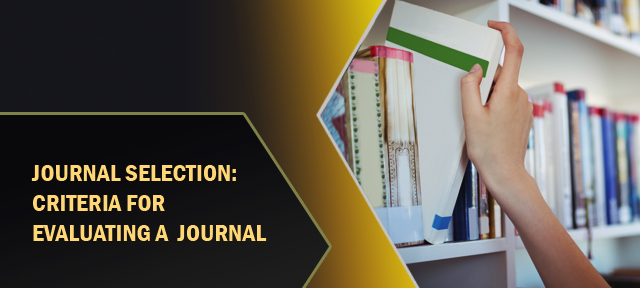Choosing the correct journal to publish someone’s work can be difficult. Many researchers are unsure of which journal to submit their work to. If you send your manuscript to a journal that isn’t a suitable fit, it will almost certainly be returned to you without peer review. When looking for the appropriate journal for your submission, think about what your research topic is, who your target audience is, what type of research methodology you’ll use, and what kind of article you’ll write. Publishing in shady publications can taint your research’s credibility, limit your career opportunities, and result in little or no diffusion and uptake. Some journals have recently been under heightened attention as a result of the expansion of journals, with adjectives like dubious, predatory, pseudo, deceitful, unscrupulous, illegitimate, or dishonest being used to describe them. There is no retraction policy, the homepage language is aimed at authors, the scope encompasses non-biological matters as well as biomedical topics, and paper submission is done via email, among other things.

However, the below markers should be noticed before choosing a journal:
Scientific Rigor
The scientific rigor of the journal’s published articles is a major indicator of its quality. Reading articles from a journal is a good way to assess the publication’s quality, which is especially useful for journals that haven’t yet acquired a large enough audience to earn a high impact factor. Examine the article’s academic writing quality as well as the publication’s level of scientific and research knowledge. Additionally, this will assist you in familiarizing yourself with the kind of papers published by the journal and determining whether or not this is the type of paper you will write.
Editorial Excellence
The editorial quality of a publication, especially editorials, might reveal information about the journal’s quality. Lack of editorial oversight and reviewer commitment is indicated by misspellings, grammatical and punctuation problems, or an absence of clarity in writing. These indicators may point to a journal that isn’t suitable for publication. Titles and abstracts can also reflect editing quality.
Ethics
On the journal’s website, information about ethics should be available, as well as the journal’s expectations of authors and how they approach these issues.
Process of Peer Review
While the vast majority of journals use a pre-publication peer review approach, as publishing evolves, certain journals are now experimenting with post-publication peer review, in which a work is published without peer review and reviewers are asked to publicly remark on or review it. While this option provides a much faster path to publication than the traditional pre-publication peer review model, it is still new enough that some institutions or funding organizations may be unsure what to make of papers published in these journals, so carefully consider whether this is the best option for you.
Members of the Editorial Board
Analysis of a journal’s editorial board can disclose important information about the journal’s quality. Members of the board must be well-known in fields relating to the journal’s aim and scopes, linked with reputable institutions, and possess appropriate academic qualifications. It’s also a good idea to have contact information for the editing team.
Status of Indexing
Authors want their work to be found and read by other people. People must be able to discover your article in order to read it, which is where indexing services come in. Researchers in the biological sciences mostly use PubMed and Scopus as indexing services, which are essentially literature databases. If you’re thinking about submitting to a new journal, you should double-check the information on their website to make sure they’re indexed before submitting.
Metrics for Citation
The Journal Impact Factor(JIF) is one of the several citation metrics available on each journal’s page. It shows the average number of times a journal’s recently published material is mentioned.
It’s vital to remember that the JIF has limits, and no researcher should rely solely on the impact factor when evaluating a journal’s usefulness or prestige. Journal Citation Reports explain the context of a journal’s JIF and how to ethically use the measure.
Conclusion
Your study will flourish if you use the correct journal. It puts you in the best possible position to reach a relevant and engaged audience, and it can help your work have a longer-lasting impact thanks to a high-quality publishing procedure.

